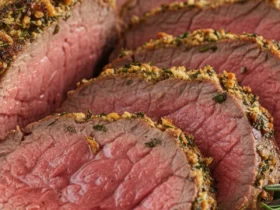The first time I stepped into Di Fara Pizza in Brooklyn, it felt less like a restaurant and more like a pilgrimage. The air was thick with the scent of simmering tomatoes, melting cheese, and that unmistakable aroma of perfectly baked bread. Watching the legend, Dom DeMarco, craft each pizza by hand was pure magic. The foundation of that magic, I quickly learned, was his incredible dough. This Di Fara pizza dough recipe is my tribute to that experience—a journey to recreate that iconic, chewy, and crispy crust in my own kitchen.
For years, I tested and tweaked, trying to capture the soul of that perfect slice. This recipe is the result. It’s not just a set of instructions; it’s the key to unlocking a truly legendary pizza experience at home. It honors the tradition of a long, cold fermentation which develops an incredible depth of flavor that you just can’t get from a quick dough.
Why You’ll Love This Recipe
- Authentic Brooklyn Flavor: This dough has the characteristic chew and flavor profile of one of New York’s most famous pizzerias.
- Perfectly Crispy & Chewy: The blend of flours and slow fermentation creates a crust with that ideal crisp bottom and airy, chewy interior.
- Surprisingly Simple: While it takes time, the actual hands-on work is minimal and straightforward for any skill level.
- The Ultimate Pizza Night Foundation: This dough is the perfect canvas for your favorite toppings, from simple margherita to loaded supreme.
The Sacred Ingredients for the Perfect Di Fara Crust
The secret to the Di Fara texture and flavor lies in a simple but specific blend of ingredients. There’s no magic powder here, just quality components working in harmony.

- “00” Flour: This is the heart of Italian pizza dough. It’s a super-finely milled flour that creates a light, tender, and slightly crisp crust. Don’t skip this if you can find it!
- Bread Flour: This is our workhorse for structure and chew. The high protein content in bread flour develops strong gluten, giving the dough that signature pull and satisfying bite.
- Instant Dry Yeast: I prefer instant yeast because it can be mixed directly with the dry ingredients, simplifying the process. If you only have active dry yeast, you’ll need to proof it in the warm water first.
- Fine Sea Salt: Salt is crucial for flavor and for controlling the yeast’s activity. Fine sea salt dissolves easily into the dough.
- Extra Virgin Olive Oil: A touch of good-quality olive oil adds richness, flavor, and softness to the final crust.
- Lukewarm Water: The water should be around 105-110°F (40-43°C). Too hot and it will kill the yeast; too cold and it won’t activate properly.
Bringing Your Di Fara Pizza Dough to Life, Step-by-Step
Ready to create some magic? Let’s walk through it together. Follow these steps closely, and you’ll be on your way to pizza perfection.
1. Combine the Dry Ingredients

In the bowl of a stand mixer fitted with the dough hook (or a large mixing bowl), whisk together the “00” flour, bread flour, instant yeast, and fine sea salt. Getting these well-combined now ensures everything is evenly distributed.
2. Add the Wet Ingredients

With the mixer on low speed, slowly stream in the lukewarm water and the olive oil. Mix until a shaggy, rough dough starts to form. Your mixture should look lumpy and just barely combined, just like in the photo below. This is exactly what you want!
3. Knead the Dough

Increase the mixer speed to medium-low and let it knead the dough for about 8-10 minutes. If kneading by hand, turn the dough out onto a lightly floured surface and knead for 10-12 minutes.
Pro-Tip
You’re looking for a dough that is smooth, elastic, and slightly tacky. It should spring back slowly when you poke it.
4. The First Rise (Bulk Fermentation)

Lightly oil a large bowl and place the dough inside, turning it once to coat. Cover the bowl with plastic wrap or a damp kitchen towel. Let it rise in a warm, draft-free spot for about 1.5 to 2 hours, or until it has doubled in size.
5. Divide and Shape

Gently punch down the dough to release the air. Transfer it to a lightly floured surface and divide it into two equal pieces. Gently shape each piece into a smooth, tight ball. This helps create a nice round pizza later.
6. The Second Rise (Cold Fermentation)

Place each dough ball into a separate oiled airtight container or a zip-top bag. Place them in the refrigerator for at least 24 hours and up to 72 hours. This is the most important step for developing that classic Di Fara flavor!
7. Prepare for Baking

About 2-3 hours before you plan to bake, remove the dough from the refrigerator and let it sit at room temperature. This takes the chill off and allows the gluten to relax, making it much easier to stretch.
7 Chef’s Secrets for a Flawless Di Fara Dough
Over my many pizza-making sessions, I’ve picked up a few tricks. Here are my top seven tips for getting this Di Fara pizza dough recipe just right.
- Use a Kitchen Scale: For baking, accuracy is everything. Measuring flour by volume (cups) can be inconsistent. A simple digital kitchen scale ensures your flour-to-water ratio is perfect every time.
- Don’t Rush the Cold Ferment: I know it’s hard to wait, but the 24-72 hour cold ferment is non-negotiable for flavor. This slow process develops complex, slightly tangy notes that you can’t fake.
- Stretch, Don’t Roll: Never use a rolling pin! It will compress all the beautiful air bubbles you worked so hard to create. Use your fingertips and knuckles to gently stretch the dough from the center outwards, leaving a slightly thicker rim for the crust.
- Get Your Oven Blazing Hot: Dom DeMarco’s oven was incredibly hot. To replicate this at home, preheat your oven with a pizza stone or steel inside to the highest possible temperature (usually 500-550°F or 260-290°C) for at least an hour.
- Cornmeal Is Your Friend: A light dusting of cornmeal on your pizza peel will act like little ball bearings, helping your pizza slide effortlessly onto the hot stone.
- Trust the Windowpane Test: To know if your dough is perfectly kneaded, take a small piece and gently stretch it between your fingers. If you can stretch it thin enough to see light through it without it tearing, the gluten is perfectly developed.
- Understand Your Flours: The blend of “00” and bread flour is key. Each serves a different purpose, from tenderness to chewiness. Different brands can have slightly different protein contents, which affects how much water they absorb. For an in-depth look at flour composition, the USDA FoodData Central is a fantastic resource for understanding wheat flour.
Making It Your Own: Fun Di Fara Dough Variations
Once you’ve mastered the classic Di Fara pizza dough recipe, why not have some fun with it? Think of this dough as a blank canvas. You could try adding a tablespoon of finely chopped fresh rosemary or a teaspoon of garlic powder to the dry ingredients for an herby twist.
For a nuttier, more rustic flavor, try substituting about 20% of the bread flour with whole wheat flour. You might need to add a tiny bit more water, as whole wheat is a bit thirstier. This dough is also incredible for making calzones or stromboli! Just fill it with ricotta, mozzarella, and your favorite toppings, seal it up, and bake until golden brown. You could even use it to make amazing, chewy garlic knots.
How to Store Your Di Fara Pizza Dough
If you make the dough ahead of time or have leftovers, storage is simple.
Refrigerator: You can store the unbaked dough balls in airtight containers in the fridge for up to 3 days. The flavor will continue to develop! Just remember to let it come to room temperature before stretching.
Freezer: This dough freezes beautifully. After the first rise, shape the dough into balls, lightly coat them with olive oil, and place each one in a freezer-safe zip-top bag. Squeeze out as much air as possible. It will keep for up to 3 months. To use, thaw it overnight in the refrigerator, then let it sit on the counter for 2-3 hours before using.
Perfect Pairings
To complete your authentic pizzeria experience, serve your pizza with a simple side that won’t overpower the main event. A fantastic choice is our Simple Arugula Salad with Lemon Vinaigrette. The peppery arugula and bright dressing cut through the richness of the cheese perfectly. Of course, you’ll need a great sauce, and our Classic Homemade Marinara Sauce is the perfect companion for this legendary crust. For a drink, a cold, crisp beer or a simple glass of Chianti is a classic choice.
Frequently Asked Questions (FAQ)
What kind of flour did Dom DeMarco use?
Dom DeMarco famously used a blend of flours. It’s widely believed to be a mix of ’00’ flour imported from Italy and a high-gluten American bread flour, which is what this recipe emulates to achieve that signature texture.
What is the secret to Di Fara pizza?
The secret is a combination of things: the high-quality dough with its long fermentation, the use of multiple cheeses (low-moisture and fresh mozzarella, plus Grana Padano), San Marzano tomatoes, and a finishing drizzle of olive oil and fresh basil snipped with scissors.
How long should pizza dough ferment?
For maximum flavor development, this pizza dough should cold ferment in the refrigerator for a minimum of 24 hours and up to 72 hours (3 days). This slow fermentation is crucial for the taste.
What is the difference between 00 flour and bread flour?
“00” flour is very finely milled and has a lower protein content, which results in a tender, crisp crust. Bread flour is higher in protein, which develops more gluten, leading to a chewier, more structured crust. Combining them gives you the best of both worlds.
Can I make this Di Fara pizza dough recipe ahead of time?
Absolutely! This recipe is designed to be made ahead of time. The dough needs at least 24 hours in the fridge, so it’s perfect for planning a pizza night a few days in advance.
Why is my pizza dough not stretching?
If your dough is snapping back and won’t stretch, it’s usually because the gluten is too tight. This happens when the dough is cold. Let it sit at room temperature for at least 2-3 hours to allow the gluten to relax.
What temperature should I bake my pizza at?
You should bake your pizza at the highest temperature your home oven can reach, typically between 500°F and 550°F (260-290°C). Preheating a pizza stone or steel is essential for getting a crisp bottom crust.
What cheese is on Di Fara pizza?
Dom DeMarco used a blend of cheeses: a base of shredded low-moisture mozzarella, dollops of fresh buffalo mozzarella, and a generous grating of aged Grana Padano or Parmigiano-Reggiano after baking.
Is Di Fara pizza Neapolitan style?
While it shares some characteristics with Neapolitan pizza (like high-quality ingredients and a hot oven), it’s more accurately described as a New York-style pizza. It’s a bit larger, sturdier, and has a unique texture that is quintessentially Brooklyn.
How much does a slice of Di Fara pizza cost?
Di Fara is famously one of the more expensive slices in New York, often costing around $5 for a regular slice. This is a reflection of the high-quality imported ingredients and the meticulous, handmade process.

The Ultimate Di Fara Pizza Dough Recipe
Equipment
- Stand Mixer (optional)
- Kitchen Scale
- Large Mixing Bowl
- Airtight containers
Ingredients
- 250 g "00" Flour
- 250 g Bread Flour
- 10 g Fine Sea Salt
- 3 g Instant Dry Yeast
- 325 g Lukewarm Water (approx. 105°F / 40°C)
- 15 g Extra Virgin Olive Oil
Instructions
- Combine Dry Ingredients: In the bowl of a stand mixer or a large bowl, whisk together the "00" flour, bread flour, salt, and instant yeast.
- Add Wet Ingredients: With the mixer on low (or using a wooden spoon), slowly add the lukewarm water and olive oil. Mix until a shaggy dough forms.
- Knead: Knead on medium-low speed for 8-10 minutes, or by hand on a floured surface for 10-12 minutes, until the dough is smooth and elastic.
- First Rise: Place the dough in a lightly oiled bowl, cover, and let it rise in a warm place for 1.5-2 hours, or until doubled.
- Divide & Shape: Punch down the dough, divide it into two equal pieces, and shape each into a tight ball.
- Cold Ferment: Place each dough ball in a separate airtight container and refrigerate for at least 24 hours and up to 72 hours.
- Rest: Remove the dough from the fridge 2-3 hours before baking to let it come to room temperature.
- Bake: Preheat your oven with a pizza stone to its highest setting (500-550°F). Stretch the dough, add your toppings, and bake for 7-10 minutes, or until the crust is golden and the cheese is bubbly.
Notes
Conclusion
Recreating a legend like the Di Fara pizza dough might seem intimidating, but as you can see, this di fara pizza recipe is all about patience and quality ingredients. This recipe brings the soul of that iconic Brooklyn pizzeria right into your home. The aroma that fills your kitchen as it bakes is worth every second of the wait.
Ready for your next kitchen adventure? Explore more delicious recipes here at SpoonnSpice!














Leave a Review